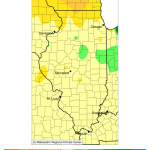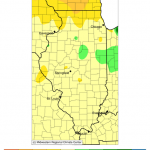The NWS released their new outlooks for the first half of 2018. First of all, the NWS notes that La Niña conditions continue across the Pacific Ocean and will likely persist through the rest of winter. It will likely fade this spring, leading to so-called “ENSO-neutral” conditions, which will continue through summer. “ENSO-neutral” just means that we are between La Niña and El Niño conditions, in other words, neutral.
January
The shorter-range forecasts out to 14 days indicate a shift in the weather pattern bringing warmer and wetter than normal conditions across Illinois. By this Sunday we could be in the 40s and 50s in Illinois (left panel, below) while the prospects of rainfall are high with potential totals of 1/2 to 1 inch over the next 7 days (right panel).
Continue reading “NWS Outlook for First Half of 2018”



